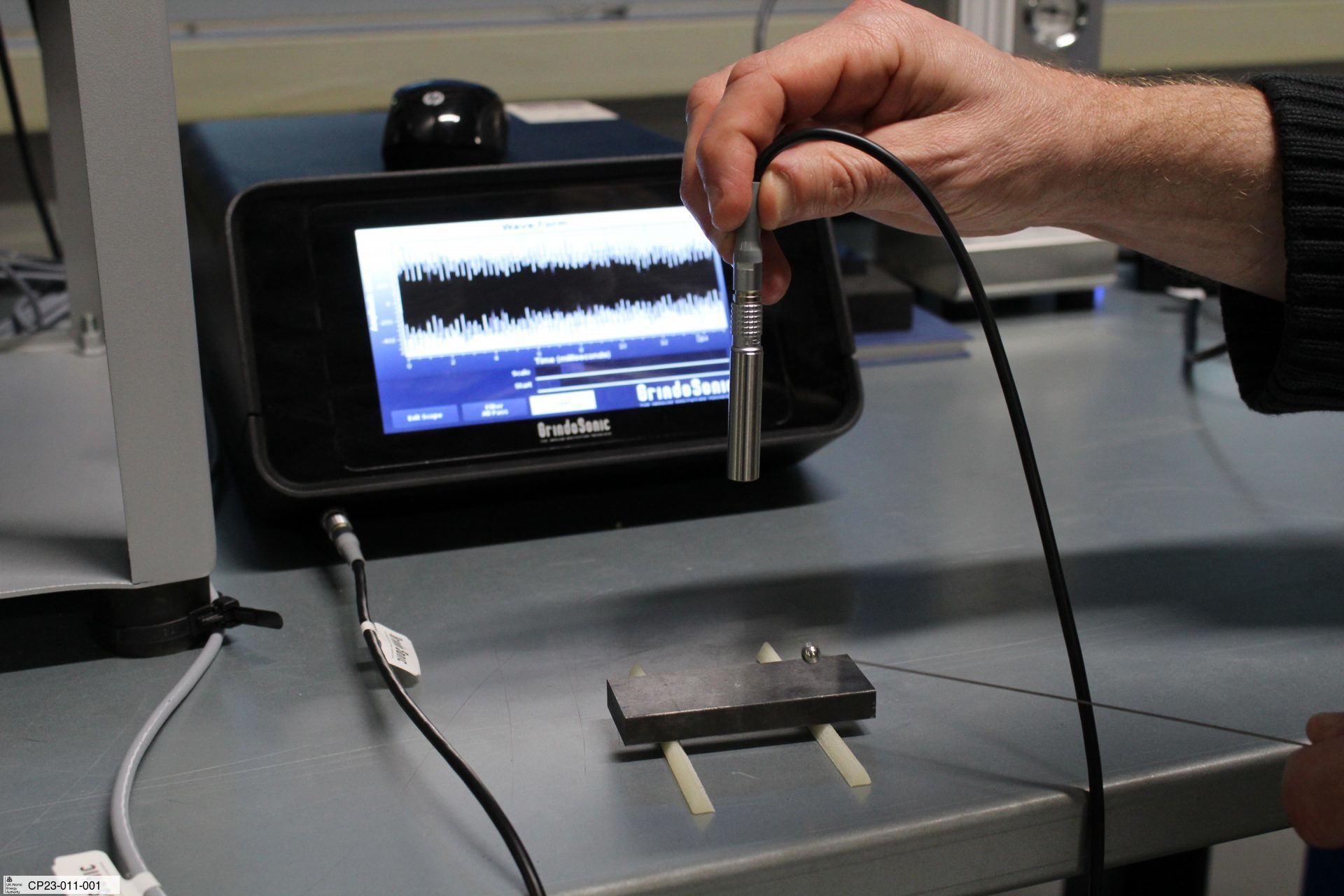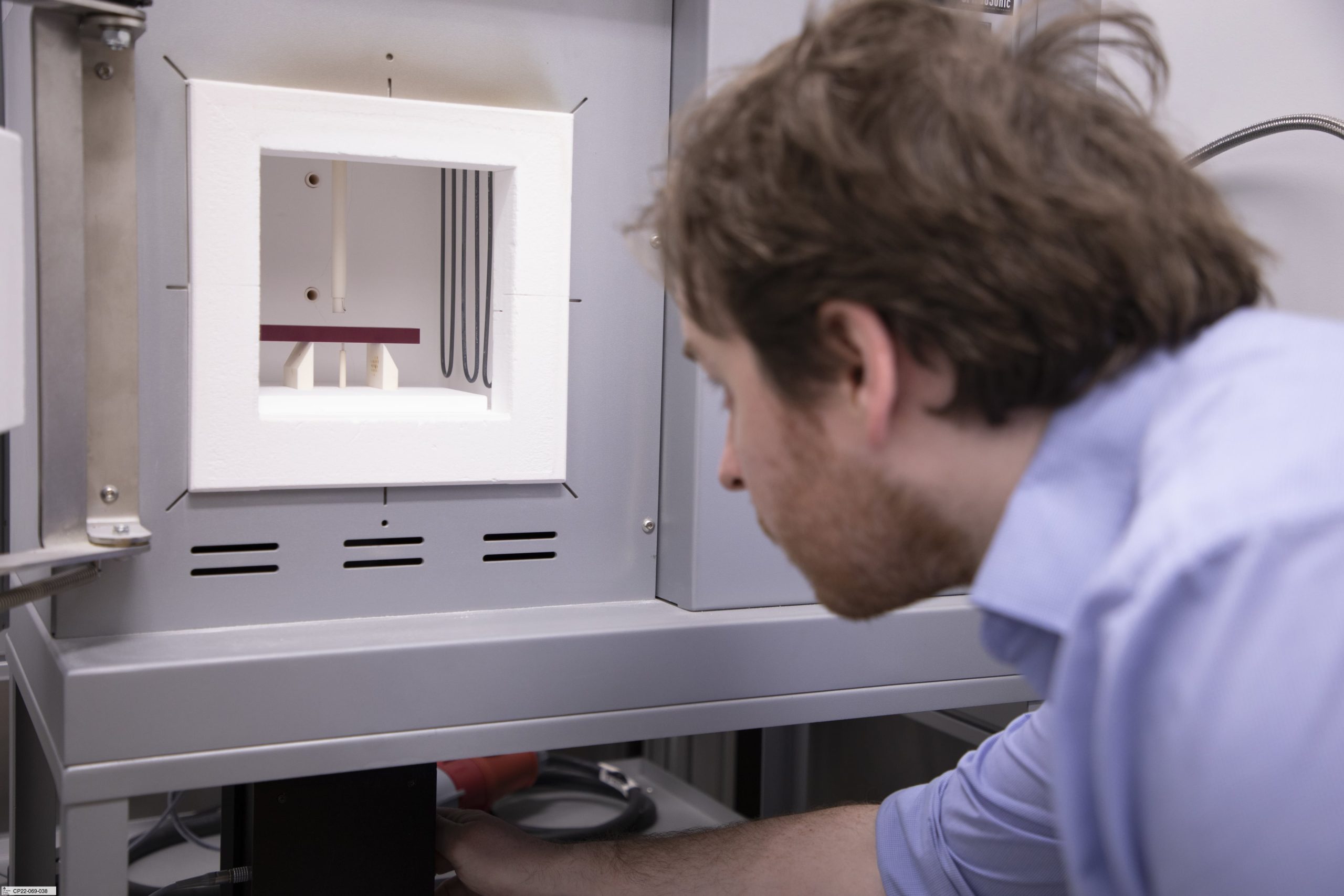Instrument Overview:
Impulse Excitation Technique, IET, is a non-destructive material characterization technique used to determine the elastic properties, such as Youngs Modulus or shear Modulus.
Samples can be of any regular prism geometry. These are suspended or held at a specific point in relation to their length. The sample can then be excited mechanically by being lightly struck with a “hammer”, this induces a vibration into the sample, known as the natural frequency. The frequency of this vibration is picked up by either a contact sensor or a microphone. From this, and the materials dimensions, the various modes of vibration can be analysed.

Bench top testing with the IET on a tungsten bar, showing live damping results

IET furnace set up showing sample
Applications:
- Metals, ceramics, and composites can all be tested.
- Elastic and shear modulus determination
- Poisson’s Ratio
- Damping / Internal friction characterisation that may arise from changes in internal microstructure and defects.
Technical specifications:
- Frequency range 20 Hz – 100 kHz
- Reference accuracy better than 0.005%
- Resolution up to 1/1.000.000
- Furnace maximum temperature 1,500 °C